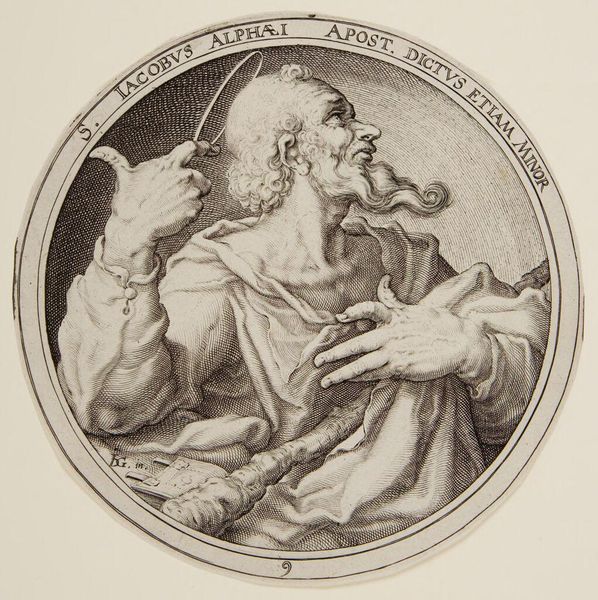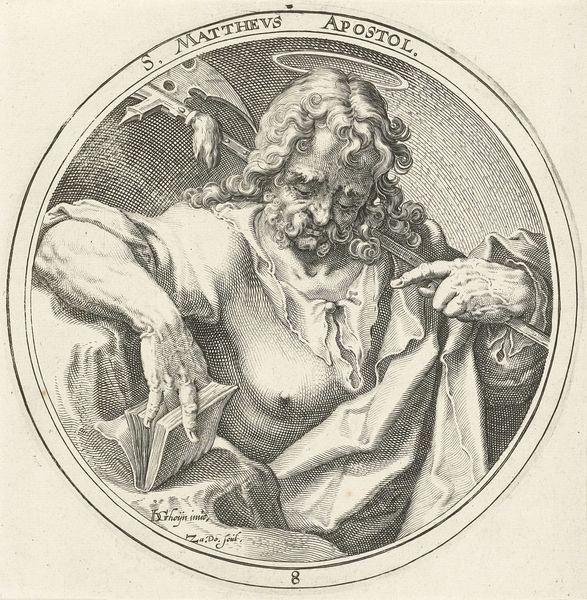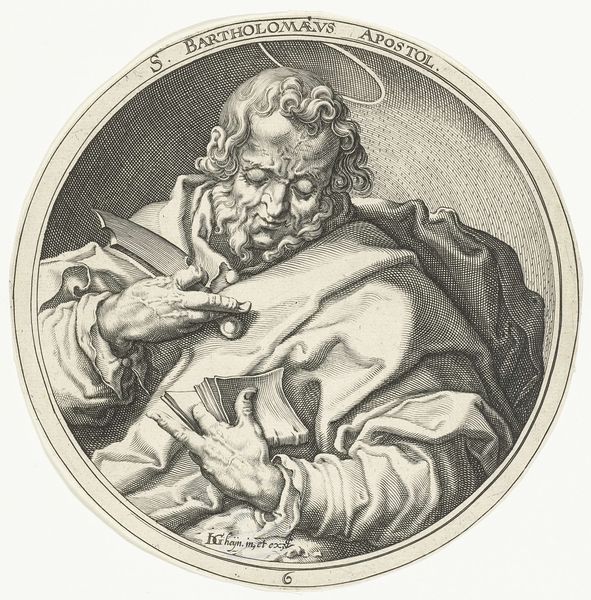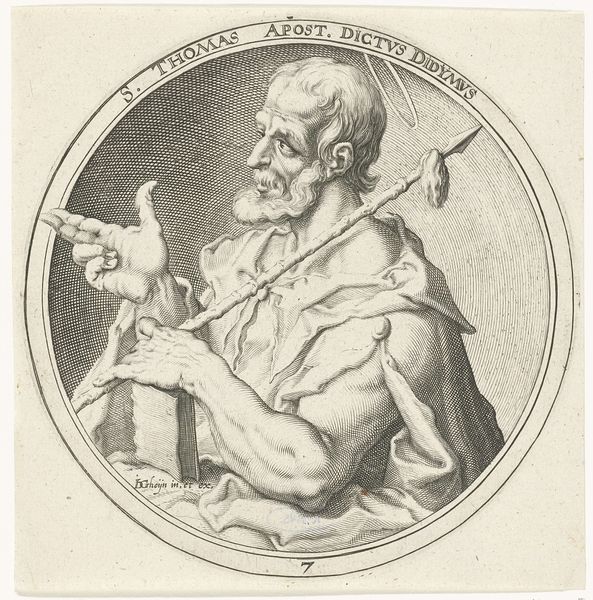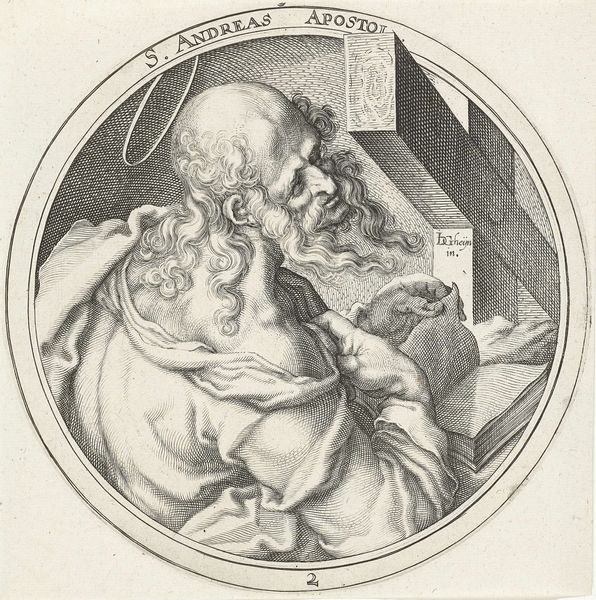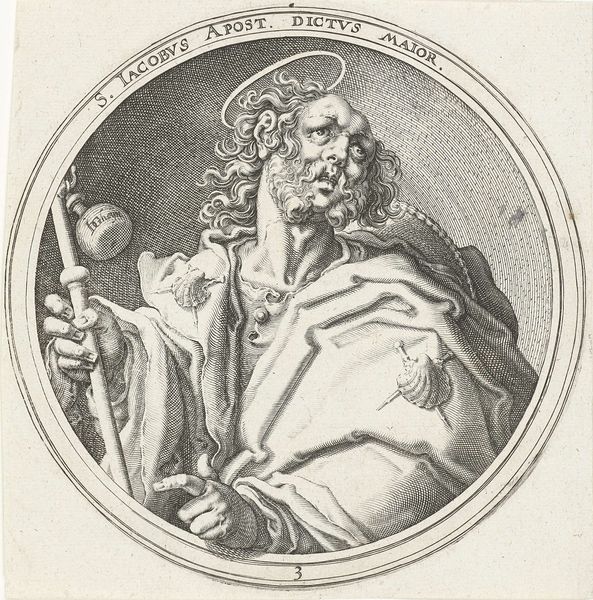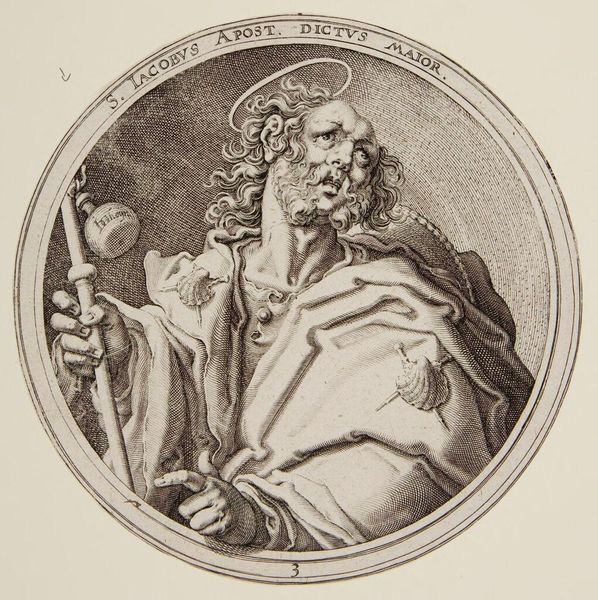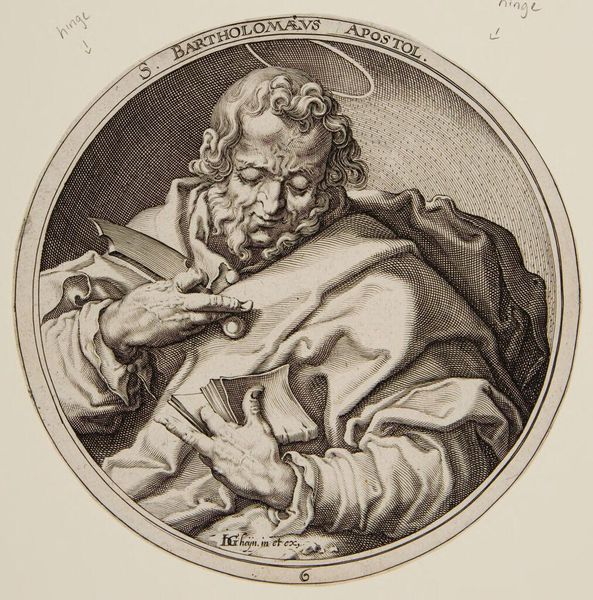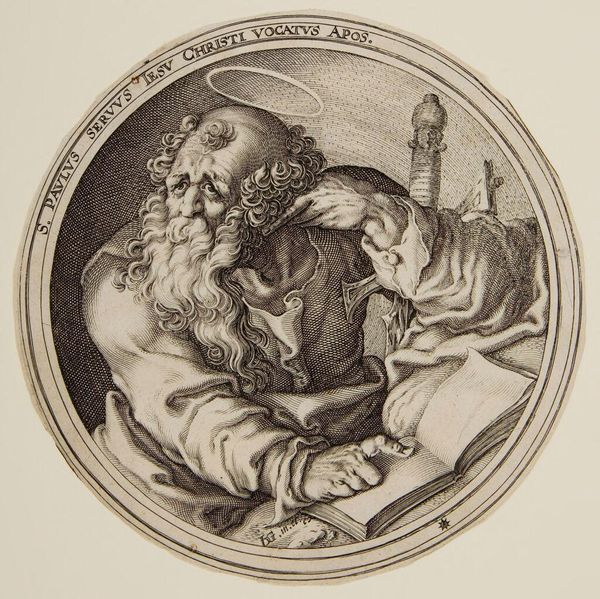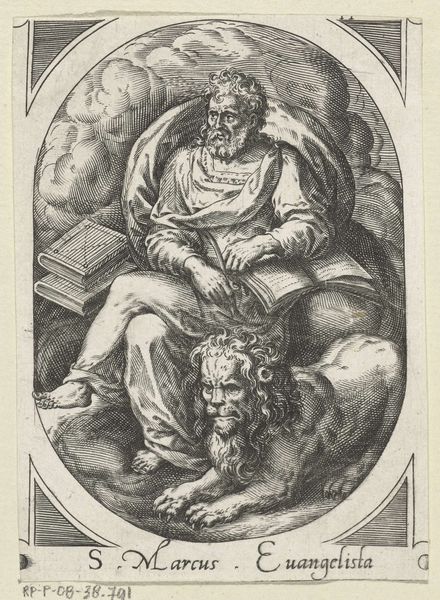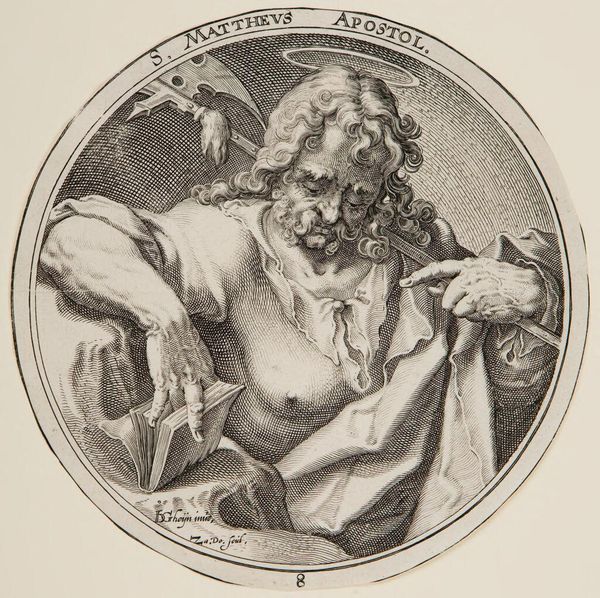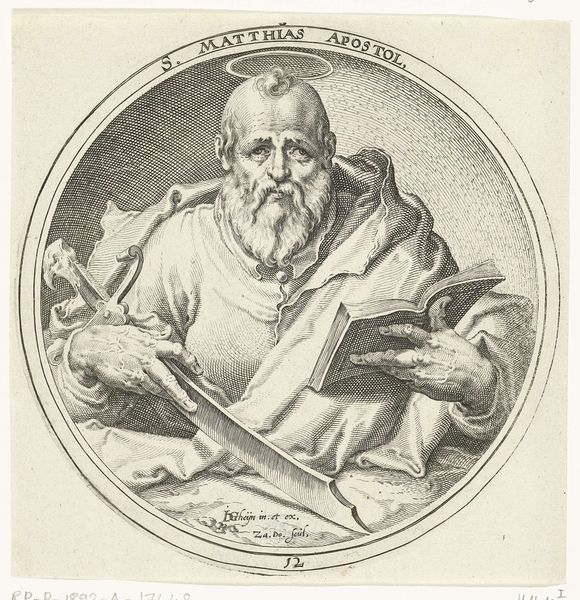
print, engraving
#
portrait
#
medieval
# print
#
old engraving style
#
caricature
#
figuration
#
line
#
portrait drawing
#
northern-renaissance
#
academic-art
#
engraving
Copyright: Rijks Museum: Open Domain
Curator: Let’s turn our attention to this intriguing print, “H. Jacobus de Mindere,” made around 1596. It’s an engraving attributed to Zacharias Dolendo, currently residing in the Rijksmuseum. What strikes you initially? Editor: The severity, really. Despite being just lines on paper, there's a strong sense of piety, almost austerity, emanating from the figure. The gaze, the gesture... it's compelling. Curator: This print is part of a larger visual culture invested in shaping religious identity. Depictions of saints served not merely as portraits but also as models for behavior, reinforcing prevailing religious ideologies. Look closely at the instrument above Jacobus's head – do you know the relevance of that? Editor: If I remember correctly, this particular saint, Saint James the Less, carries a fuller's club, recalling his martyrdom – a gruesome event indeed, which becomes abstracted in the simple curvature hovering over his figure. It almost seems...halo-like? The tension between the actual narrative and its idealized presentation is quite telling, isn't it? This violence inflicted against marginalized groups often turns into martyrdom and even holiness. Curator: Exactly. Also, note the Latin inscription around the circumference: "S. Jacobus Alphai Apost. Dictus Etiam Minor". Translating to Saint Jacobus, Apostle, also called the Lesser. This naming helped to differentiate between this Saint Jacobus and Saint Jacobus the Greater to further distinguish the individual's legacy in religious history. How do you see its design playing into the socio-political climate? Editor: It fits, doesn't it? This level of precise engraving would only be commissioned by a highly religious subject. Looking closely, the crosshatching and line work must've taken considerable time, emphasizing dedication and devotion in more ways than just religious. Curator: Precisely. In its own way, the piece embodies an intersection between craft, power, and belief. Its presence then, like now, serves as a constant reinforcement of existing religious power. Editor: So, looking beyond face value opens so much insight on what this art symbolized for religious observers during the time, but the lasting impacts of using marginalized narratives to incite fervor remain in use today. Curator: Yes, art acts like a snapshot—capturing society's politics, power structures, and culture at one given time. In its essence, art has no other choice but to be political, just like the people producing them.
Comments
No comments
Be the first to comment and join the conversation on the ultimate creative platform.
